Buddhism, with its deep spirituality and age-old wisdom, has forged a close link with Japanese culture. In this article we will explore the historical roots of Buddhism in Japan, its various schools, the contemporary practices of the Japanese and its cultural impact.
THE HISTORY OF BUDDHISM IN JAPAN
The history of Buddhism in Japan is a rich and complex saga that begins in the 6th century. The arrival of this spiritual philosophy was marked by intrepid missionaries, including the Korean monk Ekan. These emissaries crossed the seas with determination, carrying the sacred teachings of Buddha. Buddhism gradually took root in Japanese society, adapting and merging with indigenous beliefs to form a unique expression of spirituality. The first Buddhist temples emerged, becoming centers of study and meditation that helped shape Japan's culture and mentality.
HOW DID BUDDHISM COME TO JAPAN?
The arrival of the Korean monk Ekan in Nara marks the beginning of a new spiritual era for Japan. Early followers of Buddhism were attracted to the ideas of compassion, reincarnation, and liberation from the cycle of rebirth. Gradually, Buddhism took root in Japanese society, influencing arts, culture and institutions. This encounter between Buddhism and Japan created a spiritual web that still persists today, making Buddhism a fundamental component of Japanese cultural identity.

THE DIFFERENT SCHOOLS OF BUDDHISM IN JAPAN
Buddhism in Japan is a mosaic of schools, each displaying distinct nuances in the interpretation of Buddha's teachings. Explore the richness of this diversity with an overview of each of the 13 notable schools.
-
Hosso: Emphasizing meditation and understanding emptiness, the Hosso school embodies a deep contemplative approach.
-
Kegon: Inspired by the Lotus Sutra, the Kegon school explores the depth of ultimate reality and celebrates the interconnectedness of all phenomena.
-
Ritsu: Focused on monastic discipline, the Ritsu school highlights the strict practice of Buddhist precepts.
-
Tendai: Integrating various Buddhist practices, the Tendai school promotes the idea that all beings can achieve enlightenment.
-
Shingon: With its esoteric rituals and meditation practices, the Shingon school seeks to achieve unity with Buddha in this very life.
-
Nichiren Buddhism: Placing the recitation of the mantra Nam-myoho-renge-kyo at the heart of its practice, the Nichiren school aims to awaken the inner Buddha of each individual.
-
Jodo: Founded on faith in Amida Buddha, the Jodo school offers the path to birth in the Buddhist paradise after death.
-
Jodo Shin:The Jodo Shin school offers a path accessible to everyone, regardless of personal practice.
-
Yuzu Nenbutsu: Characterized by the fervent recitation of Nenbutsu, this school emphasizes the invocation of Amida's name as a means of achieving bliss.
-
Ji: Centered on seated meditation, the Ji school offers a path to personal realization through silent contemplation.
-
Rinzai: Known for its demanding Zen meditation practices, the Rinzai school emphasizes the direct experience of awakening.
-
Soto: Advocating seated meditation (zazen) as a means of achieving enlightenment, the Soto school values simplicity and conscious presence.
-
Obaku: Fusing Zen Buddhism with Chinese elements, the Obaku school offers a distinctive approach to meditation and self-understanding.
Each of these schools has helped shape the rich canvas of Japanese Buddhism, offering unique perspectives and varied paths to understanding and spiritual awakening.
ZEN BUDDHISM IN JAPAN
At the heart of Japanese Buddhism lies a school of profound simplicity and powerful introspection: Zen Buddhism. This branch, originating from Chinese Chan, flourished in Japan, leaving an indelible mark on the spirituality and culture of the country.
Rinzai and Soto are the two main Zen schools in Japan, each offering a unique approach to meditation and the quest for enlightenment. The Rinzai school is distinguished by its koans, paradoxical riddles intended to transcend rational thought and lead to sudden enlightenment. Rinzai adepts participate in intense meditation sessions, often under the guidance of a demanding master.
On the other hand, the Soto school favors a more contemplative approach, emphasizing the daily practice of seated meditation, called zazen. In the Soto tradition, awakening is not seen as a sudden event, but rather as a gradual realization through regular and consistent practice. Soto Zen encourages an attitude of mindfulness in all daily activities, transforming every moment into an opportunity for enlightenment.
Zen Buddhism has transcended the boundaries of the monastery to become an influential force in daily life in Japan. Zen gardens, with their careful arrangements of stones and gravel, visually embody Zen simplicity and harmony. Tea ceremonies, particularly the famous Japanese tea ceremony, have their roots in the Zen principles of mindfulness and appreciation of the present moment.
This school has also captivated the West, attracting spiritual seekers and artists seeking the serenity and mental clarity that Zen Buddhism offers. Thus, Zen Buddhism, with its elegant philosophy and direct approach to reality, continues to leave a deep imprint on world spirituality. In Japan, it remains an essential pillar of the Buddhist tradition, a source of inner calm in the whirlwind of modern life.

HOW DO THE JAPANESE PRACTICE BUDDHISM?
The practice of Buddhism in Japan transcends the boundaries of the religious to become an integral component of daily life, permeating family rituals, key life moments, and even national celebrations.
Japanese homes are often decorated with Buddhist altars, called butsudan, where family members pay respects to their deceased ancestors. These altars are the center of daily rituals, such as the offering of incense and food, as well as the recitation of prayers. The Japanese view these practices as a way of maintaining a spiritual connection with their ancestors and seeking their protection.
Buddhist ceremonies also play a crucial role in life's defining moments, such as weddings and funerals. Buddhist weddings, often steeped in Shinto traditions, incorporate symbolic rituals that symbolize the couple's spiritual union. Likewise, Buddhist funerals, marked by specific rituals and prayers for the deceased, provide spiritual comfort to family and loved ones.
Buddhist temples, dotted across the country, serve as places of worship, meditation, and sometimes even cultural centers. Devotees regularly visit these temples to pray, make offerings, and participate in special ceremonies, helping to maintain the vitality of the Buddhist community.
Buddhist festivals, such as Obon, are times of celebration and reflection. During Obon, Japanese people honor the spirits of their ancestors by performing traditional dances, lighting lanterns, and visiting family graves. These festivities reflect the Buddhist belief in the continuity of family ties even beyond death.
In addition, many Japanese follow more informal Buddhist practices, such as meditation and sutra recitation, to cultivate inner peace in the busy context of modern life.
Thus, the practice of Buddhism in Japan is a complex web woven of rituals rooted in tradition, moments of personal reflection, and a constant connection between daily life and Buddhist teachings.
THE INFLUENCE OF BUDDHISM ON JAPANESE CULTURE
Buddhism, since its introduction to Japan, has left an indelible imprint on the country's culture, infusing every aspect of daily life, from art to literature, and from spirituality to the way of life.
Art and aesthetics:
The influence of Buddhism on Japanese art is evident in the creation of masterpieces such as the famous screen paintings and ukiyo-e prints. Buddhist themes, such as artistic depictions of deities and scenes from the Garden of Eden, have inspired generations of Japanese artists throughout the centuries. Zen gardens, with their careful arrangements of rocks and sand, represent an artistic expression where meditation and contemplation merge harmoniously.
Literature and philosophy:
Classical Japanese literature, influenced by Buddhism, produced iconic works such as Murasaki Shikibu's "Tale of Genji." These writings often reflect Buddhist concepts such as impermanence, suffering, and the search for enlightenment. Haikus, a concise poetic form, also capture the Buddhist sensibility in observing the fleeting beauty of nature and life.
Ceremonies and traditions:
Traditional ceremonies in Japan, such as the tea ceremony, are deeply influenced by Buddhist principles of mindfulness and simplicity. Every gesture in the tea ceremony is imbued with symbolism, reminding us that life is fleeting and emphasizing the beauty of the present moment. Likewise, Buddhist festivals, with their traditional dances and colorful parades, are living expressions of spirituality and joy shared within the community.
Architecture and religion:
The architecture of Buddhist temples, with their sloping roofs and elaborate carvings, demonstrates the harmonious fusion between art and faith. Structures like the Todai-ji in Nara, housing the great statue of Buddha Vairocana, illustrate the artistic and spiritual greatness that arises from Buddhist practice.
Daily life and philosophy of life:
On an individual level, Buddhist philosophy has shaped the mentality of the Japanese, influencing the way they view life, death, and human relationships. The idea of impermanence, in particular, engendered an attitude of gratitude toward each moment, reinforcing the Japanese concept of mono no aware, the appreciation of the transient beauty of things.
Thus, the influence of Buddhism on Japanese culture goes far beyond a simple religious dimension, penetrating deep into the soul of the country to become an inexhaustible source of inspiration, reflection and beauty.







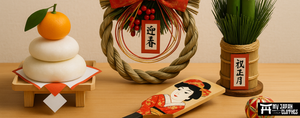
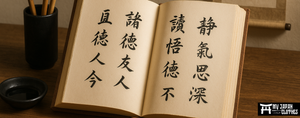

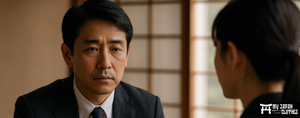
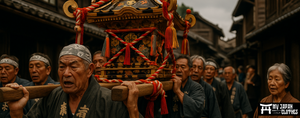
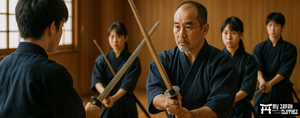

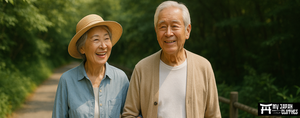
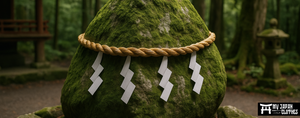


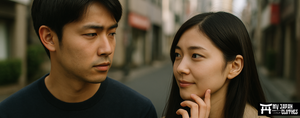
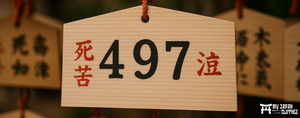





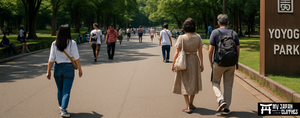

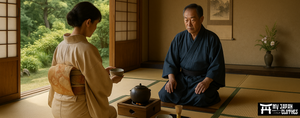
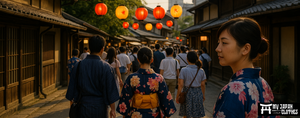




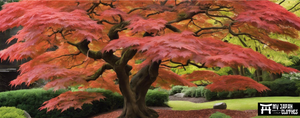
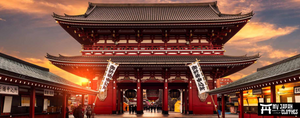
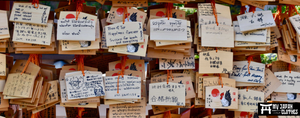

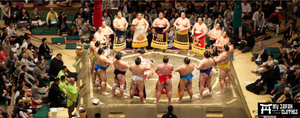















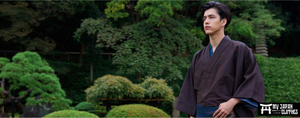
Leave a comment